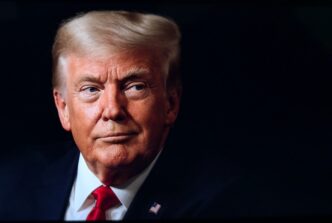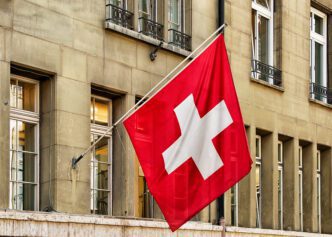In the wake of recent inflation data, a political blame game has erupted, with former President Joe Biden being targeted by his successor, Donald Trump. As inflation shows signs of resurgence, Trump’s previous promises to tackle this economic issue are under scrutiny.
Donald Trump has taken to social media to pin the blame for rising inflation on Joe Biden, even though Biden’s presidency concluded on January 20, marking the end of his influence over national economic policies. Yet the inflation report covering January is technically the last under Biden’s administration, offering Trump a short-lived respite from accountability.
On the campaign trail, Trump assured the public that his administration would bring prices down immediately upon taking office. However, with inflation escalating, particularly in essential areas like egg prices due to external factors such as avian flu, his administration is under fire from Democrats. They argue that Trump’s numerous executive orders have not addressed inflation.
The political squabble over inflation, less than a month into Trump’s presidency, exemplifies the limited power any president holds over short-term price fluctuations. Yet, as inflation climbs, from a previous low of 2.4% in September after a significant drop from 9% in 2022, Trump may have to shoulder the blame if it continues to rise.
Currently, inflation is ticking upwards again, reaching 3%. Key areas such as insurance, used cars, airfares, and rents remain economically challenging, with prices sticking at high levels. With eggs now costing as much as $10 per dozen, they have become the inflation emblem once held by $5 gasoline.
Public perception hasn’t been favorable towards Trump’s economic strategy. His focus on imposing tariffs as a central economic policy is causing concern that these will exacerbate inflation. The University of Michigan survey highlights that Americans expect inflation to reach 4.3% within the next year, hinting at growing skepticism over Trump’s approach.
Faced with escalating inflation, Trump has potential policy pivots, particularly regarding tariffs, which he can implement independently. While initially used to address trade deficits, Trump now links tariffs to broader goals, making it easier to retract them if pressured by inflation realities.
The ongoing inflation challenge presents a dichotomy. Economists suggest that a return to 9% inflation is unlikely, yet the potential for inflation to climb to 4% remains, leaving Trump’s policies in a precarious position. The general public, after years of price volatility, might not tolerate further increases, complicating Trump’s stance.
Trump appears assured that he will not experience the same inflation woes that plagued Biden. His administration is opting for deregulation across various sectors instead of direct inflation countermeasures, believing that distancing the economic narrative from Biden will work in his favor. However, Biden is no longer a viable scapegoat as he is absent from future election ballots.
As inflation concerns loom large over Trump’s early presidency, the political and economic landscape demands decisive action. With public sentiment and economic indicators pointing to increased pressure, the Trump administration must navigate these challenges carefully to avoid long-term repercussions.








